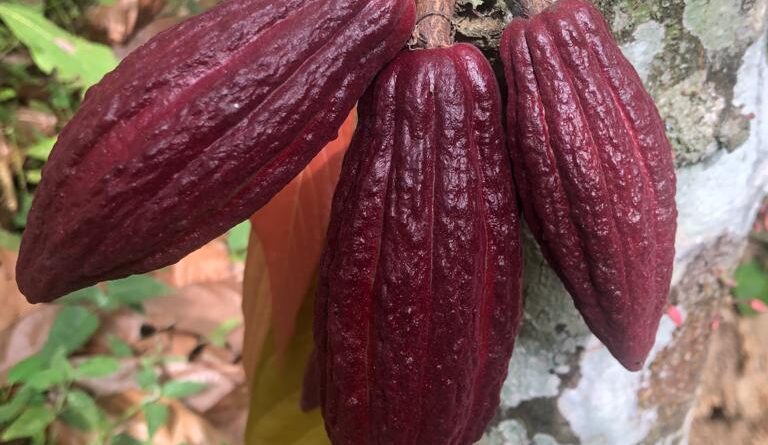Cocoa after roasting Part 3 Chocolate manufacture By Dr Terry Mabbett
In the natural state cocoa beans are slightly acid with a pH of between 5.2-5.8. When the pH remains at this level the beans yield products with pleasantly sharp flavours that blend appropriately in many different types of food and confectionery products. But chocolate manufacturers want something different. They use so-called Dutch-process cocoa powders and cocoa liquors, produced from nibs that were treated with alkali before, during or after the roasting process. The treatment is commonly called ‘Dutching’ because it was first carried out by C.J. van Houten in the Netherlands in the late nineteenth century with the resulting product marketed as ‘Dutch cocoa’.
During the alkalising process, a solution of food-grade alkali (usually potassium carbonate) is applied to partially neutralise the natural cocoa acids and mostly acetic acid. Acetic acid gives vinegar its tangy taste and preserving properties. Alkalising results in cocoa liquor and cocoa powder with a pH at or just below 7 (neutral). However, the Dutch process can be used to produce a definitely alkaline product with a pH as high as 8.
In addition to changing the pH of the cocoa powder, the alkalising process produces a darker colour, mellows the flavour and changes the taste profile of the product. Alkalising improves the dispersibility (suspension) of the powder in water. For this reason, alkali-treated powders were sometimes referred to as ‘soluble’ powders, as well as ‘alkalised or Dutch’ powders, But the word soluble is a misnomer because cocoa powder is not soluble in water, but dispersible (wettable).
Chocolate manufacture
Cocoa liquor (mass) is the basis of chocolate, with the addition of sugar and milk as required, depending on what type of chocolate is being manufactured.
Cocoa liquor already contains the full natural complement of cocoa butter, but more needs to be added. Some is added during the initial refining process, but most is used in the later stages of the conching process. Chocolate manufacture comprises a series of carefully conducted stages carried out in sequence according to strict controls on time, speed, temperature and proportions of ingredients. They are in order: refining (rolling), conching, tempering and dressing.
Rolling is a refining treatment for the liquor using cylindrical grinders (rollers). They are placed one of top the other and adjusted to operate at increasingly closer spacing, while rotating at differential speeds of around 200 revolutions per minute. The dry and flaky mixture thus produced is kneaded in a blender, while adding the first complement of cocoa butter. The liquor which is now homogenous (uniform) and of very fine particle size is ready for conching.
The continuous motion of conching facilitates thickening to maintain and improve the homogeneous nature of the chocolate mass. This allows volatile acids to escape, thereby improving the aroma of the chocolate. Conching is a flavour enhancing, aerating and emulsifying procedure carried out in custom-designed machines. The original conches were shaped like shells a format that gave the process its common name. ‘Concha’ is the Spanish word for shell.
Conching lasts for up to 72 hours depending on the type of machine and the chocolate product desired. Temperature during conching is closely controlled at 60 to 80° C, to achieve the desired flavour and uniformity of chocolate product. Duration of conching controls development of the velvety texture and smoothness of chocolate, sought after by consumers of a high quality product.
Conching is one of the most important stages in the whole ‘scheme’ of cocoa processing and chocolate manufacture. Coming so far downstream it is perhaps the final arbiter which ensures that all the groundwork for flavour, aroma and mouth feel, laid down beforehand, is safely secured in the chocolate bar
Tempering is a crucially important stage in which the hot, conched chocolate is allowed to cool very slowly to obtain optimal crystallisation of the cocoa butter. Cocoa butter is a mixture of several triacylglycerols (neutral fats) based primarily on palmitic, oleic and stearic acids. Each triacylglycerol is polymorphic which means that it can solidify in different crystalline forms. Cocoa butter also shows polymorphism and has to solidify in a stable crystalline form to obtain the desired final properties of the chocolate. The desired properties are stability of crystals, high melting point, hardness and gloss.
Tempered chocolate is finally put through several sequential procedures collectively known as ‘dressing’.
- Moulding, where the tempered chocolate passes into a weighing hopper which distributes it into moulds
- Tapping, in which the moulds are continually shaken to distribute the mass uniformly and to remove air bubbles
- Hardening in refrigerated tunnels at 7°C. During hardening, the volume of the chocolate decreases (i.e. the chocolate becomes denser).
- Turning out the moulds. Because chocolate becomes denser on hardening, it automatically slips out of the mould and onto a conveyor for packaging and packing.
Strict conditions of temperature (18-20° C) and relative humidity (below 50%) conditions are required for good keeping quality. High or fluctuating temperatures lead to fat bloom, a condition in which the cocoa butter migrates to the surface making the product white or grey in colour as it re-crystallises. High humidity leads to mustiness in cocoa powder and even the growth of moulds on both cocoa powder and chocolate. Excessive moisture may also solubilise sugars in the chocolate, which deposit on the chocolate surface as sugar bloom. This can be differentiated from fat bloom by the sandy texture imparted by hard crystalline sugars.
The End

